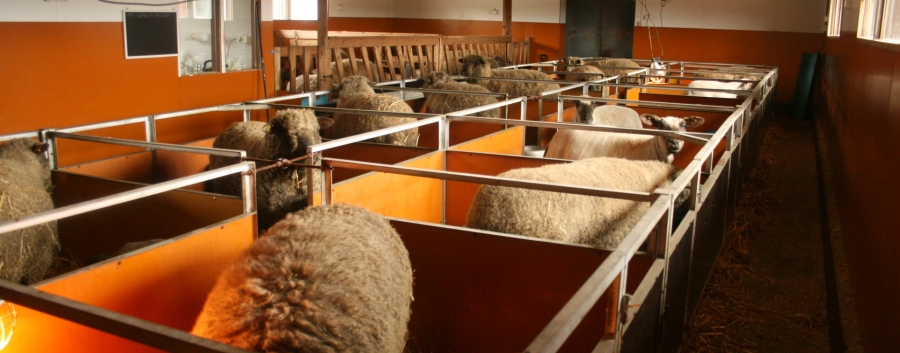Yearly selection is carried out in order to keep the best individuals for breeding stock and choose the animals that do not, for one reason or another, fulfil the criterion, for culling. Largely this selection process depends on the subjective judgement of the sheep farmer and with the experience the farmer will gain an eye for selecting structurally good sheep. This selection would indeed be very simple if every time a first-class ewe impregnated by a first-class ram would result in first-class lambs. As it is not quite as simple, some tools have been developed in order to make selection easier. These tools include subscribing to the national monitoring programmes and making the most of the data made available, using ultrasound to measure the ribeye muscle on four months old lambs and making the most of the structural evaluations done in livestock sales.
National monitoring programmes
National monitoring plays a central role in the breeding process of mutton breed. The reports produced allow monitoring of the productivity of both your own flock as well as other flocks within the monitoring network. Years of research and breeding together with modern efficient data analysis allows the use of mathematical indices for describing the breeding value of the ewe as well as the newborn lamb. In sheep production monitoring, data is collected for each animal on a yearly basis for breed and pedigree information, lambing, complications and eliminations. For the breeding process, it is important to make sure the lambs are weighed at the right stage and that the data is then sent as soon as possible for analysis. The lambs are weighed at three days (birth weight), six weeks (42 days) and four months (120 days). Based on the weight at four months, ultrasound measurements, the sex of the lamb, its pedigree and the breeding data of the previous years, so called BLUB-index is calculated for each lamb. For a sheep raised for breeding purposes this index has to be minimum 100, criterion being more strict for rams than for ewes.
The ultrasound measurements
In 1997 we joined a national project which aimed at improving the muscularity of the livestock by measuring every year ribeye muscle thickness and the depth of the back fat layer on four months old lambs by using ultrasound equipment. This data allows the calculation of muscularity index, mutton production index, fat index and EUROP index (live animal muscularity class). According to our experience these measurements have made animal selection easier and given a good base for breeding leaner and more muscular sheep.
Disease control
To maintain the good state of livestock health in Finland there are national monitoring programmes for monitoring and controlling the most serious and contagious sheep diseases. Our farm takes part in scrapie monitoring programme and in the Maedi-visna -prevention programme and we have the highest health status for these diseases. In recent years Orf infections have rapidly increased in Finnish flocks, and we also had our first Orf infection in spring 2015. Even if the flock is symptomless, can animal still be a carrier of the disease, and thus the infection risk remains
The genetic richness in the breeding flock is ensured by importing new animals from other EU-countries every now and then. We have carried out our imports by following the rules and regulations set by the goverment (Evira) and the Unit of animal disease control (ETT). Our latest import was from Latvia and there we gained two new Oxford Down ram pedigrees P and R to Finland.

